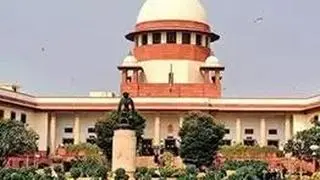Rajasthan’s Bhilwara Model has hit headlines and evolved into a role model to show how a well-coordinated effort could contain the spread of Covid-19 successfully.
South India has its own Bhilwara in Karimnagar, the north Telangana district with a population of about 10 lakh people.
The Confederation of Indian Industry (CII) has done a case study on the ‘Karimnagar model’ and what all that went into it to check the spread of the infection.
What were the preparations in Karimnagar ?
Even before Telangana and the country announced lockdown, restricting people to their homes, the State woke up to the news of 10 Indonesian preachers entering Karimnagar on March 15. The fact that they entered the town after attending the Markaz meeting triggered concerns.
Besides, the district had got about 600 people who returned from abroad after the pandemic fears gripped the State.
As the police got an inkling of the Indonesian preachers arrival and their movements, they swung into action and alerted the district administration.
Besides alerting the fellow passengers on the Sampark Kranthi Express in which the Indonesians travelled, the police and revenue officials tracked the primary and secondary contacts.
“After the initial outbreak of Covid-19 positive cases by the Indonesians, district authorities have traced the locations and possible route taken by them during 48 hours spent at Karimnagar,” the CII case study said.
Testing and isolation
As many as 73 primary contacts and hundreds of secondary contacts were identified, and their samples were sent for testing.
All the coronavirus positive people are isolated and people who are suspected to be in contact was quarantined and their samples too were sent to diagnosis.
Over 150 teams were formed to conduct door-to-door survey to identify persons with symptoms of Novel Coronavirus. The police kept a vigil using about 8,000 CCTV cameras and drones and houses of infected people and their primary and secondary contacts geo-tagged.
The district administration have aggregated 1,000 beds and 225 ICU beds in public and private sector hospitals and kept them ready.
A focussed ‘Fever Survey’ was conducted, covering over 6,000 houses surrounding the positive cases.
All the positive cases have been referred to the Gandhi Hospital in Hyderabad and formed seven Containment Clusters, including three in Karimnagar town and four in Huzurabad.
What does the report outline
In the 13-page report, which was submitted to the State Government on Friday, the CII outlined 15 measures that the administration, headed by District Collector, Konduru Shashank, had taken to address multiple challenges.
The challenges include identifying the primary contacts, tracing their secondary contacts, testing, mobilising hospital beds, disinfecting the town, monitoring the home quarantined persons, supplying the essentials to them, and ensuring the smooth flow of essential commodities to the rest of the population.
As a result of the concerted effort, the CII said the district could contain the spread of the virulent virus and averted exponential growth of the positive cases.
Soon, the district was off the list of the highly infected districts in the State. The district that witnessed first of the positive cases in the State could successfully arrested the spread of the virus.
Cases reported
According tolatest numbers, the city reported 19 positive cases, 15 discharges, four active cases, seven patients in public quarantine facilities and 164 in home quarantine.
Chief Minister K Chandrashekar Rao, who was to visit Karimnagar in the third week of March to instill confidence in the people of the district, had cancelled his trip.
"I didn't want to keep the attention of the police and district administration off the Covid-19 containment exercise," he had said in a press conference, while appreciating the efforts.








Comments
Comments have to be in English, and in full sentences. They cannot be abusive or personal. Please abide by our community guidelines for posting your comments.
We have migrated to a new commenting platform. If you are already a registered user of TheHindu Businessline and logged in, you may continue to engage with our articles. If you do not have an account please register and login to post comments. Users can access their older comments by logging into their accounts on Vuukle.